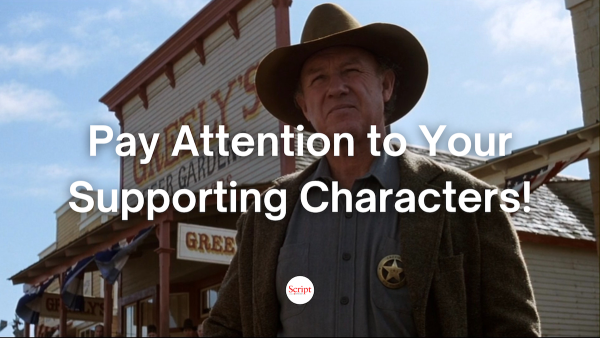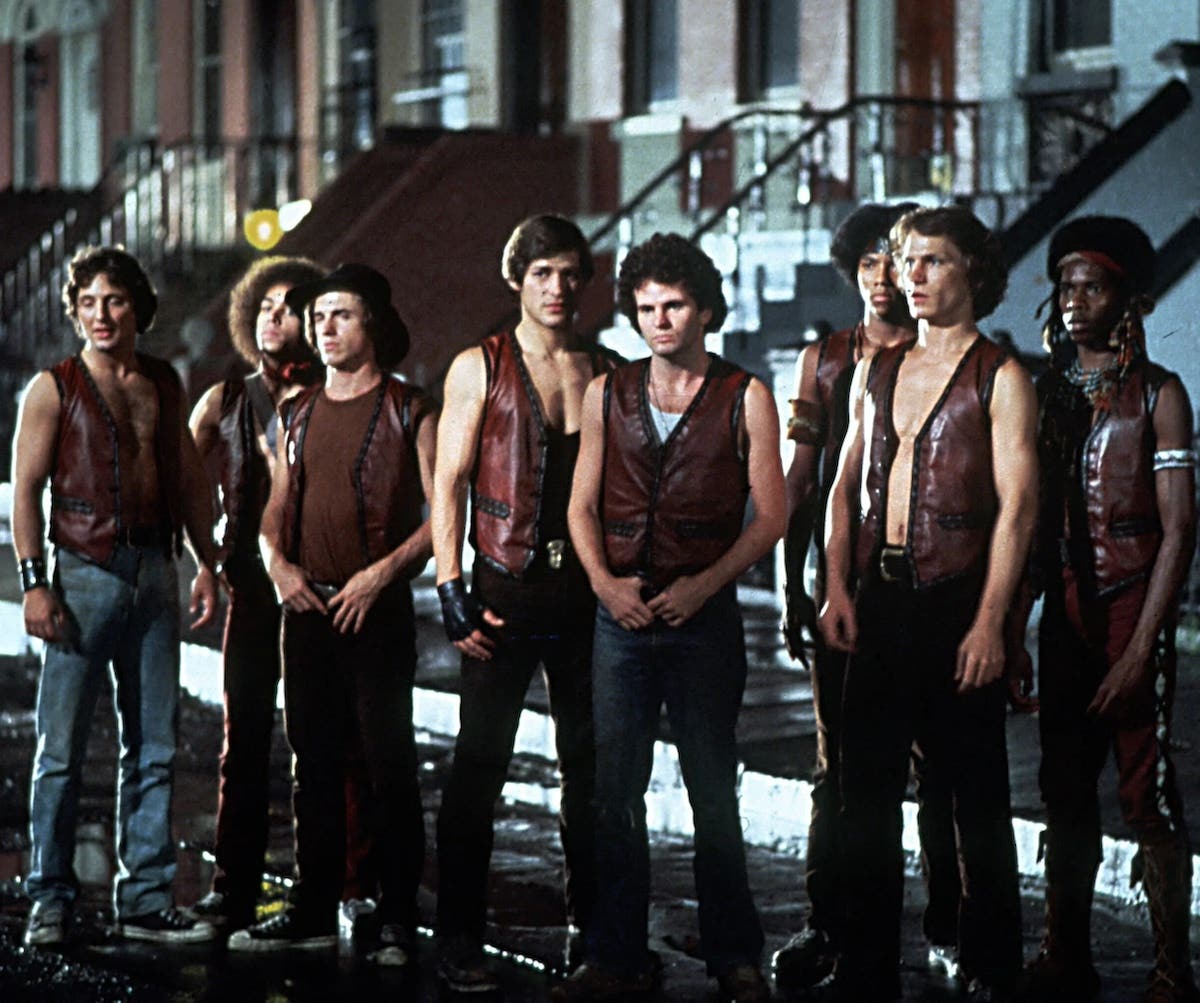Storytelling Strategies: ‘Argo’ and Recapitulation
Paul Joseph Gulino discusses how ‘Argo’ could have been elevated by using recapitulation scenes.
How can you turn an audience from observers into participants?
According to the Academy’s voters, Argo (directed by Ben Affleck and written by Chris Terrio) was not only the best written film of 2012 but also the best film altogether. It was certainly a satisfying experience for a large audience.
How could anyone improve on that?
The answer is in the use of recapitulation scenes. That is, a few of these at timely moments in the film would have made it even more effective.
To take a step back, conflict is essential for creating drama, but it’s not quite enough. Almost everyone has come across a tennis game being played in a public park -- and there’s plenty of conflict involved, especially if the players are really going at it. But the experience for a viewer isn’t necessarily dramatic, even if he or she knows the rules of the game and watches the game from beginning to end.
If, however, a viewer found out that one of the players was his or her spouse, and he or she bet the viewer's house on the game’s outcome -- and the other player is a well-known hustler -- that viewer's experience of the game would be very different indeed.
Providing this crucial information before a viewer watches the game is the function of exposition, and it lays the groundwork for changing the audience from observers to “participants” in the action -- from detached viewers of mere activity into people who are held in suspense, hoping and fearing for the characters involved.
“Before” is the operative word -- if the information comes during or after the conflict, it’s too late to have this effect.
Conveying this exposition is the primary function of the first act, but such information can also be distributed throughout a film to great effect.
Recapitulation Scenes Defined
A recapitulation scene -- the term was, as far as I know, coined by Frank Daniel -- is a scene in which characters briefly recount where the story has been and then foretell where it’s going. They’re very useful in keeping the audience oriented by reviewing and revealing crucial information about upcoming events that is essential to engaging the audience emotionally.
In The Social Network (2010), the deposition scenes serve as recapitulation scenes; midway through Toy Story (1995), Woody scolds Buzz: “It’s the perfect time to panic! I’m lost, Andy’s gone, and they’re going to be moving from their house in two days and it’s all your fault!” -- a succinct recapitulation of the two characters’ predicament.
In Argo, Tony Mendez has to spring a group of hostages from revolutionary Iran through a con of setting up a phony film production company and passing the hostages off as a Canadian film crew. That much is clearly set up. It would have been most helpful, though, if at some point in the planning stage, Mendez had laid out -- to his superior, perhaps -- specifically what steps he had to take to pull off his plan.
We do learn these steps -- but only as they unfold. The audience witnesses him setting up the false production company, then traveling to Turkey to secure access to Iran, and although the action is clear, potential suspense is diminished because the audience is not cued in to the specific tasks Mendez must accomplish. If we knew these ahead of time -- and also what kinds of obstacles Mendez might encounter -- then each of these scenes becomes imbued with suspense -- suspense beyond merely hoping that he overcomes whatever seemingly random problems might happen to arise.
Pivotal Moment
This problem is clearly evident in what the storytellers contrived as the pivotal turning point in the film -- Mendez’s decision to go ahead with the operation against orders. Why does he choose to go ahead with it? What is at stake for him? What might be the consequences that result?
None of this is clear. All we know is that Mendez’s superiors have ordered him to shut it down. Shortly thereafter, Mendez sits down with a bottle of whiskey in his motel room and the next morning he’s made up his mind to disobey orders. The essential task of drama -- externalizing the internal -- hasn’t been accomplished, in this, the pivotal moment in the film.
Instead of the audience participating in the drama, we experience it as outside observers -- we don’t know what went into his decision, we just take the storytellers’ word for it that it was a tough one.
We learn later that there was a major problem with his decision -- in order to leave Iran, the CIA had to set him up with purchased tickets, and when the operation was halted, those purchased tickets were withdrawn. Without the tickets, Mendez and his crew might suffer fatal consequences.
Did Mendez know about this wrinkle? If so, and the audience knew it, his decision to go ahead anyway would put his behavior in a radically different light -- a willingness to take extreme, even foolhardy risks. We might then hope he decides not to go ahead with it, and be fearful he might. We would experience the "decision" scene as participants.
If, as seems to be the case, Mendez didn't know about this complication, then cueing the audience into it before he and his crew arrive at the ticket counter would likewise have provided us with an "uh-oh!" moment and a suspenseful experience leading up to the arrival at the ticket counter.
Instead, we find out about the problem pretty much at the same time it has been encountered, diminishing its impact and forcing the storytellers to rely more on Ben Affleck's looks of concern rather than storytelling panache.
It works, but it doesn’t work as well as it could have, if crucial information had been dispensed to the audience in a more timely manner.
Escape and Epilogue
Another clever moment of high suspense occurs soon after this, when Mendez and his crew are being interrogated just before being allowed to board the plane. It seems things are not going well until one of the Americans begins speaking Farsi to the interrogators -- the one American who had doubts about the operation and went along only reluctantly. Based, again, on Mendez’s facial expression, we can discern that this seems like a risky thing to do -- but it proves crucial to persuading the Iranians to let them board.
The scene works fine, but would have been better if Mendez had warned the crew ahead of time not to reveal that they spoke Farsi or it would blow their cover. In that case, the irony of the doubter being the one who saved them -- after disobeying Mendez’s orders no less -- would have been much more intensely experienced.
Shortly after that is one more underdeveloped moment of suspense -- the phone call to the phony production company’s offices. Turns out, someone was supposed to be manning that phone just in case the Iranians queried. But that became clear only after it was already ringing, again denying the audience the chance to embroil itself in hope and fear.
Finally, there is the last scene in the film, in which Mendez returns to his wife. There is a moment of suspense about whether or not she’ll take him back -- but we are given scant information beforehand about what is going on between them. When she embraces him, he’s happy and we're happy for him -- but, again, like that anonymous tennis game we come across in the park, we're outsiders looking in, aware of the conflict but experiencing it as observers rather than participants.
Argo is a solid film, but some timely recapitulation scenes would have enhanced its emotional impact at key moments.
Related Articles:
- More Specs & The City by Brad Johnson
- Ask the Expert: The Birth of your First Draft
- More Storytelling Strategies by Paul Joseph Gulino
- Meet the Reader: The Real Rules of Screenwriting
Tools to Help:
Paul Joseph Gulino is an award winning screenwriter and playwright, whose credits include two produced screenplays in addition to numerous commissioned works and script consultations, and his plays have been produced in New York and Los Angeles. He taught screenwriting at the University of Southern California for five years, and since 1998 has taught at Chapman University in Orange, California where he is an associate professor. He has lectured and given workshops in the U.S. and Europe and recently guest-lectured at Disney Animation in Burbank. His books include Screenwriting: The Sequence Approach and The Science of Screenwriting: the Neuroscience Behind Storytelling Strategies, co-written with psychology professor Connie Shears. His web site is www.writesequence.com.







